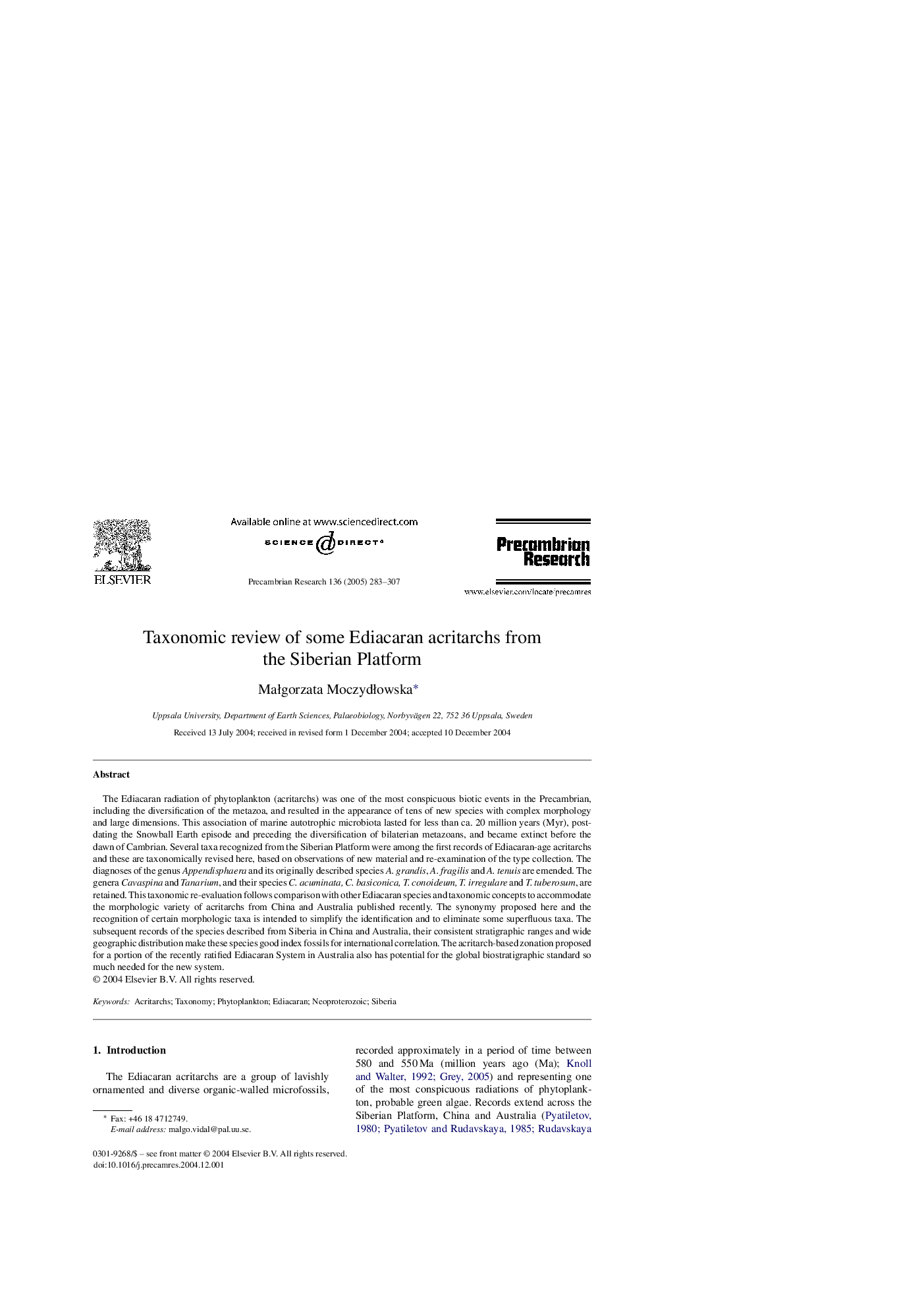| Article ID | Journal | Published Year | Pages | File Type |
|---|---|---|---|---|
| 9533650 | Precambrian Research | 2005 | 25 Pages |
Abstract
The Ediacaran radiation of phytoplankton (acritarchs) was one of the most conspicuous biotic events in the Precambrian, including the diversification of the metazoa, and resulted in the appearance of tens of new species with complex morphology and large dimensions. This association of marine autotrophic microbiota lasted for less than ca. 20 million years (Myr), post-dating the Snowball Earth episode and preceding the diversification of bilaterian metazoans, and became extinct before the dawn of Cambrian. Several taxa recognized from the Siberian Platform were among the first records of Ediacaran-age acritarchs and these are taxonomically revised here, based on observations of new material and re-examination of the type collection. The diagnoses of the genus Appendisphaera and its originally described species A. grandis, A. fragilis and A. tenuis are emended. The genera Cavaspina and Tanarium, and their species C. acuminata, C. basiconica, T. conoideum, T. irregulare and T. tuberosum, are retained. This taxonomic re-evaluation follows comparison with other Ediacaran species and taxonomic concepts to accommodate the morphologic variety of acritarchs from China and Australia published recently. The synonymy proposed here and the recognition of certain morphologic taxa is intended to simplify the identification and to eliminate some superfluous taxa. The subsequent records of the species described from Siberia in China and Australia, their consistent stratigraphic ranges and wide geographic distribution make these species good index fossils for international correlation. The acritarch-based zonation proposed for a portion of the recently ratified Ediacaran System in Australia also has potential for the global biostratigraphic standard so much needed for the new system.
Related Topics
Physical Sciences and Engineering
Earth and Planetary Sciences
Geochemistry and Petrology
Authors
MaÅgorzata MoczydÅowska,
